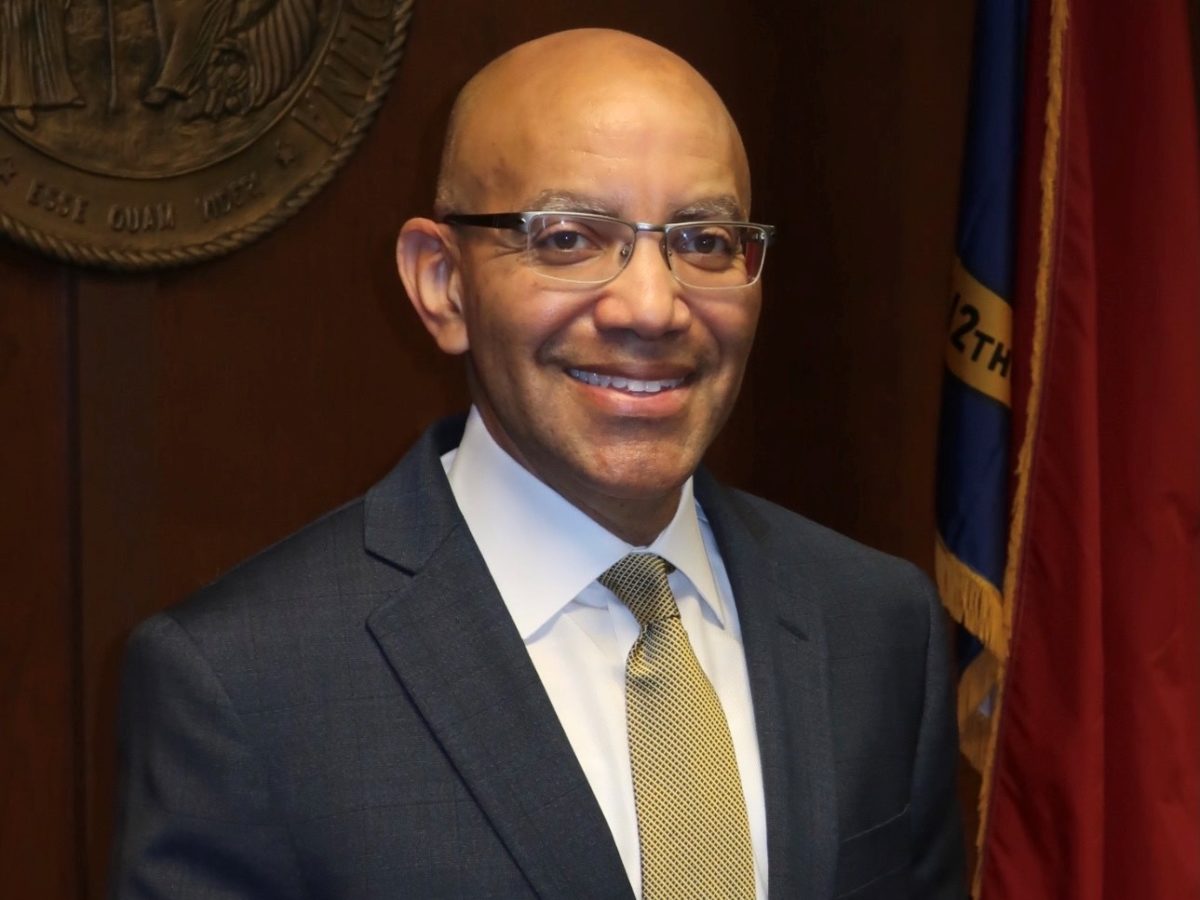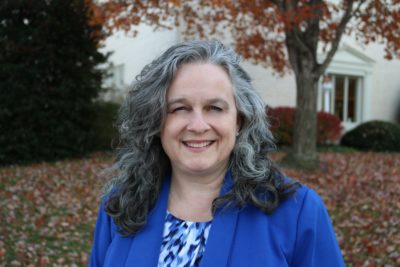
On Friday, Jan. 15, Thomas Stith will deliver the president’s report to the State Board of Community Colleges as the 10th full-time president of the NC Community College system. He’ll touch on an array of topics, but as COVID-19 continues to wreak havoc and the General Assembly prepares for its so-called long session, we can expect those topics to loom large over his remarks.
The community college system Stith now leads is facing the compounding challenges of the pandemic, ranging from declining enrollment to public health concerns to the array of individual challenges facing each of the 58 individual colleges as they launch a third straight semester shaped by COVID-19.
He is also taking over at a crucial time for the system. The economic pressures brought by the pandemic make the upcoming legislative session, where lawmakers craft the state’s biennium budget, one of the most consequential for the system in some time.
Below I will walk you through some of the most pressing issues Stith and the system will face this year — and perhaps beyond.
Issue: Funding, funding, funding — budget stabilization and faculty pay
Our community colleges are funded on a two-year rolling basis, and enrollment is the primary driver of the funding model. This piece explains the evolution of the funding system.
The video below, narrated by former NCCCS chief of staff and executive vice president Jennifer Haygood, who is now chief financial officer of the UNC system, explains the tiered funding model:
With enrollment down at an estimated 51 of the 58 community colleges during the pandemic, the system is asking for money, potentially in the tens of millions, to address the funding cuts that will result. The system will refer to the request as a need for budget stabilization. The system is loath to call it a hold harmless arrangement, but it is the equivalent of the ADM hold harmless that was passed for the K-12 system.
Whatever the label, it is the critical issue in the legislative session for community colleges — particularly small, rural ones.
The final enrollment numbers for fall should be built out in two reports — one due January 22, the other February 5. These numbers will allow for system chief financial officer Elizabeth Grovenstein and her colleagues to build out the full request for budget stabilization. One source projected the number to come out in the “tens of millions.” This probably will be a one-time request of non-recurring dollars.
After the K-12 system received the hold harmless, many assumed the same would hold true for the community colleges. We will see. It is a big task for Stith, system governmental affairs lead Mary Shuping, and the college presidents who will be making the ask.
Here are three presidents (Rachel Desmarais of Vance-Granville Community College, Scott Ralls of Wake Tech Community College, and Thomas Walker of Wayne Community College) discussing how essential budget stabilization is for their colleges:
Here is Scott Ralls alone discussing the “open door” mission of NC Community Colleges and asking the question: What doors should we close without the funding?
The other budget priorities are also important to the colleges, but Stith’s first year will be graded in large part on securing budget stabilization funds.
Another critical priority is faculty pay. The system will request $62 million in recurring dollars for 5% faculty pay increases. The system has not received state appropriations for faculty raises in several years because of the veto of the state budget during the 2019 session, so it’s framing the request as an attempt to gain parity with state employee pay increases during the same period.
Southeastern Community College president Chris English recently shared why his small, rural college is in need of faculty pay increases:
The question facing the General Assembly is whether anyone will receive pay increases given the state of the economy, but a number of people I spoke with pointed to the recent controller’s report showing a solid cash position for the state, and a number of our core economic sectors outperforming expectations, as cause for optimism.
If pay raises occur, many stakeholders told me, community colleges should be near the front of the line.
Other requests will include funding for information technology (IT) modernization. This issue came to the forefront as the pandemic struck and colleges moved largely remote. Expect staff to point to the rise of cybersecurity issues, such as the cyberattack at Guilford Technical Community College, as a reason for recurring dollars for IT.
Issue: System-office staffing and stability
The system office in Raleigh has had five leaders since Scott Ralls left as president in 2015: three interim presidents (George Founts, Jennifer Haygood, and most recently Bill Carver), Jimmie Williamson for a short tenure, and Peter Hans. Thomas Stith is the sixth leader since Ralls’ departure.
The system office staff undoubtedly would like some leadership stability.
And it isn’t just Hans’ departure last summer. A number of other leaders at the system level have left in recent years.
Former chief academic officer Lisa Chapman headed home to Sanford to lead Central Carolina Community College. Wesley Beddard, former associate vice president of programs, now leads Martin Community College. Margaret Roberton, the former associate vice president for workforce continuing education, is the vice president of workforce development at Central Carolina.
More recently, Haygood, a former chief of staff and executive vice president, became the chief financial officer of the UNC system. Haygood served in a variety of leadership roles in the community college system, including interim president. Her importance to the system cannot be overstated. I was participating in a call with the NC Community College Presidents Association when her departure was announced, and you could have heard a pin drop.
Whether you needed to know who to call in the system office or on a campus to find an answer for a difficult question, or you needed a guide to decipher complex statutes and administrative code, or you needed to pose a question about the history of the system, Haygood was the first call.
As former college president Ken Boham told me recently, “Jennifer Haygood meant more to the community college system, the colleges, the staff and the system office than any one individual in decades. She committed her all to the efforts of improving opportunities and access to education and was well respected and admired inside the system as well as outside the system. Jennifer was a truly remarkable champion and will be sorely missed.”
Since Haygood’s departure, Jane Stancill, executive director of communications, also left for the UNC system. More recently, Andrea Poole, vice president of strategic initiatives, also has announced her departure.
The staff questions before Stith include:
- Who do you hire to fill Haygood’s role? Overwhelmingly, the people I spoke with in recent weeks hope that he identifies someone in the system who has community college experience.
- Does he even keep these senior level roles the same? Another option would be for him to restructure the senior level staff structure to create a different set of roles and responsibilities across the board.
- Does he focus on community college experience for the hires or does he bring in people he trusts and has worked with in the past? This, of course, does not have to be either/or, but Stith has experience across state government, and more recently at the Small Business Administration, which provides him an extensive Rolodex of colleagues who also have experience in state government.
Issue: Maintain unity and build partnerships
When Hans’ departure for the UNC system was announced last summer, Breeden Blackwell, chair of the State Board of Community Colleges, said, “Our community colleges are stronger because of Peter Hans. He led our system with energy and vision. In the past year alone, we have seen a critical new infusion of state funding and the first enrollment increase in nearly a decade.”
Blackwell and other board members pointed to Hans’ work to align the system with the myFutureNC statewide attainment efforts, other state education agencies, private philanthropy including the John M Belk Endowment, and other entities as hallmarks of Hans’ tenure.
In the profile for the system presidency that Stith, and other candidates, were given during the application process, the board stressed the need to work with “K-12 schools, the University of North Carolina System, and North Carolina Independent Colleges and Universities, community college trustees and presidents, businesses, civic organizations, and community groups.”
Beyond that, it was frequently noted that the NC Community College President’s Association and system office have had a good working relationship when it comes to advocating at the General Assembly for their agenda. As several folks have pointed out, both the unity and the actual advocacy efforts have not always been present. One example was a divisive argument over colleges being able to offer baccalaureate degrees in certain areas of study that included several colleges making the case in favor, even as the system office and most other colleges opposed it.
As Stith takes office, he has a clear opportunity around collaboration with Peter Hans and new Superintendent of Public Instruction Catherine Truitt. Truitt was Gov. Pat McCrory’s senior education advisor a few years ago, while Stith served as McCrory’s chief of staff. Hans served as chair of the Board of Governors of the UNC System during the same timeframe and later was a senior advisor to then-UNC president Margaret Spellings. The history of these working relationships is cause for optimism.
Working with the other sectors on a range of items — from common course numbering and transfers on the post-secondary side, to continuing to improve on dual enrollment and College and Career Promise and developmental education in partnership with the K-12 sector — could have a significant impact on the lives of students and families across the state, as well as the myFutureNC established statewide attainment goal.
Other key questions for Stith and the system office on partnerships and unity:
- Will the system and the 58 colleges play a key role in the attainment work driven by myFutureNC ? And if they do, will they receive increased funding and expanded partnerships with other sectors to support the work? Or will they be expected to make do with the resources they have, even as they take on the challenge of closing our attainment gap?
- Will private philanthropy’s support of the system — and individual colleges — continue to grow? Under Hans’ tenure, the system’s Foundation secured private funding for a range of efforts including a new statewide marketing initiative.
- Stith’s travel schedule could prove challenging due to COVID-19 and the hectic nature of the legislative session, but how quickly can he establish relationships across the 58 colleges? Few of the college presidents have experience with Stith, and his record does not include significant community college experience and involvement. They are rooting for him to succeed, but building personal relationships will be crucial. The college leaders I spoke with certainly hope he hits the road sooner rather than later.
Issue: Supporting the colleges through another pandemic semester
This is the third semester that will be disrupted across the board by COVID-19. The colleges normally would be bustling with students, but yet again they face a semester full of Zooms, managing synchronous learning, the occasional face-to-face course offering for labs, and the stress of significant health concerns for their staff, students, and community.
People across the 58 colleges are at the point of exhaustion.
“The Christmas break could not have come soon enough for our employees and students this year,” Asheville-Buncombe Tech president John Gossett told me recently. “It was easy to see the stress in their eyes and written in their emails, so we made a point to tell our people to completely unplug from A-B Tech during the break. I encouraged my reports to only communicate under emergency situations; everything else can wait.
“The biggest difference coming back in January is some of that exhaustion was still evident. Typically people return for spring semester with a renewed sense of enthusiasm. Not so much this year. I asked several counterparts in Western NC who observed them same phenomenon. Our country is exhausted physically, emotionally, spiritually, and higher ed is no different.”
The system as a whole needs to feel supported, appreciated, and important in the face of everything going on in the world.
People who have worked with Stith in the past, or who have met with him in recent weeks, describe him as a good listener. Leading by listening to the stakeholders across all 58 colleges will go a long way toward helping them feel supported.
The opportunities for Stith and the system office to help the colleges feel supported could include:
- Travel, as soon as it is safe, to all 58 colleges. We launched our community college work at EdNC with a “blitz” to all 58 colleges for a reason. This is a big state, and the colleges are spread out — for example, Tri-County CC is closer to Atlanta than to Raleigh, and it takes longer to drive from Tri-County CC to the College of the Albemarle than it does to drive from Tri-County to St. Louis. They all have local strengths and challenges — and too many do not see folks from Raleigh visit often.
- Listen to the folks on the ground. Even before you can make it to all 58 colleges, use virtual tools to listen to administrators, faculty, and staff across the state.
- After listening, figure out what you can do to make a difference. Advocating for budget stabilization and faculty pay will help, and supporting the work of the Equity Task Force established last summer matters deeply, but as other issues surface, figure out how the system can support them. At times, Raleigh feels an awful long way from many of these colleges.
- Our series on RISE and developmental education illustrates one of the important issues facing both the system and the colleges. Given projected learning loss from COVID-19, remedial and developmental education will be more important than ever. Figuring out the complex issues (growing more complex by the day due to the pandemic) in collaboration with the colleges is critical.
Issue: What is the vision?
The work ahead is clearly significant in 2021 — and beyond.
Achieving budget stabilization and faculty pay increases would be a significant win for the system, given the projected price tag.
At the same time, Stith has a number of crucial hires to make — including deciding whether he restructures the existing roles.
And the system needs to continue to bolster unity and partnerships inside and outside of the system, to maintain the trust of the 58 colleges, and to support each college through another exhausting semester.
At the same time, leadership requires us to look beyond the present crisis to understand what the future might look like and to begin to paint a vision for how to get there.
As the year moves on, Stith and the system office will have an opportunity to begin to make the case for what the future of community colleges in North Carolina might look like.
We know they probably will make a case for the role of community colleges in the statewide attainment goal of 2 million by 2030 established by myFutureNC. We can assume they will continue to discuss the importance of short-term workforce development for the recovery of economically battered communities, as well as strengthening the transfer pathways for students who seek to begin at community colleges and conclude at one of our four-year universities.
Another issue is how the community colleges and the system wrestle with issues around racial equity and disparate levels of attainment for varying student populations.
As mentioned earlier, Hans appointed an equity task force before his departure. In the memo announcing their appointment, Hans wrote:
“In many ways, community colleges are an exemplar of the values of diversity, equity, and inclusion. With open doors and open hearts, we aim to welcome all students and provide affordable access, quality education, and opportunity for economic mobility. We have also implemented good programs, such as the Minority Male Success Initiative, to strengthen those pillars so that students’ outcomes match our aspirations.
“However, recent events have underlined that we have more work to do. We must ensure that colleges not only have diversity but celebrate it, that we tear down any existing systemic barriers, and that we create an environment where every member of our community is treated equally, with respect.
The challenge of ensuring more equitable access and higher rates of attainment will not be solved by a task force alone, so the question before Stith, the system, and 58 colleges is: How do we do more for all of our students and families?
Other vision questions loom large. How do they intend to keep the “open doors open” as Wake Tech president Scott Ralls articulated? What is the next set of big ideas for the community college system as the world changes rapidly around our state?
If you have stuck with us through this long piece, thank you. I’ve spent recent weeks speaking with past and present community college presidents, staff at both the system level and at individual colleges, and a range of folks who walk the halls of the General Assembly. This piece reflects the shared wisdom of the folks I met with, as well as my own interpretation and analysis. I am grateful to everyone who took the time to speak with me.
And now I want to speak with you! I would love to hear your thoughts on the vision for our colleges moving forward — or on any of the elements we touched on throughout the piece. Text COLLEGE to 73224 or leave your comments below.
Editor’s note: The John M Belk Endowment supports the work of EducationNC.


